Axing the pine explosion
By Jon Rawlinson
More than 300,000 hectares of sheep and beef farms have been sold for forestry throughout New Zealand since January 2017, Beef and Lamb says.
Its report said sheep and beef farm sales for conversion to forestry are continuing at an alarming rate.
“It’s clear that more and more trees are going onto productive sheep and beef farmland,” the organisation’s chair Kate Acland said.
“The numbers show whole-farm sales for conversion to forestry for carbon credits are continuing at pace.”
Her comments come as the government pushes ahead with a bill to put a cap on conversions which Agriculture minister Todd
McClay said have been “gutting” rural communities.
Mapiu sheep and beef farmer David Richardson told The News if the trend continued, rural communities would feel the pain across the board.
“It’s mostly whole farms being sold and converted to grow pine because there’s such good money through carbon credits. We’ve already lost huge numbers of stock units to forestry, and it’s hit other downstream jobs like vets, shearing, drenching, fencing and all that.”
Meat processing businesses have also been feeling the pinch, Richardson said.
“The meat processors are being adversely affected by the increase in sheep land gone to forestry, which has happened in this area quite a bit. It’s mostly due to ‘carbon credit
farms’ that have been sold in the last 12-18 months.”
Pine forests also come with their own environmental impacts through increased biosecurity, fire and flooding risks as well as damage and pollution from forestry slash.
While native bush is better than pine from an environmental standpoint, it doesn’t generate carbon credits to the same degree.
“A lot of farms in the King Country have some native bush, which is good at sequestering carbon, however it’s very hard to get this into the carbon market.”
The new government bill should restrict whole farm conversions, but it can’t reverse the trend, Richardson said.
“It’s pretty hard to convert a forest back into pastoral grazing land because of all the carbon credits required to do so. The
bill will probably help, but it’s not going to make that much difference because it’s too late – hundreds of farms have already been converted.”
Richardson and other King Country farmers see the fallout first hand, but they are far from alone.
Farmers who grow trees on their land are “part of the solution” Acland said, and government restrictions on whole farm conversions nationwide are positive but they do not go far enough.
“Anecdotally, we’re still hearing of a significant number of farms being sold despite the government announcing limits last year,” she said. “We’re concerned some sales are continuing on the basis of intent to purchase land before the limits were announced.”
Continued on page 3
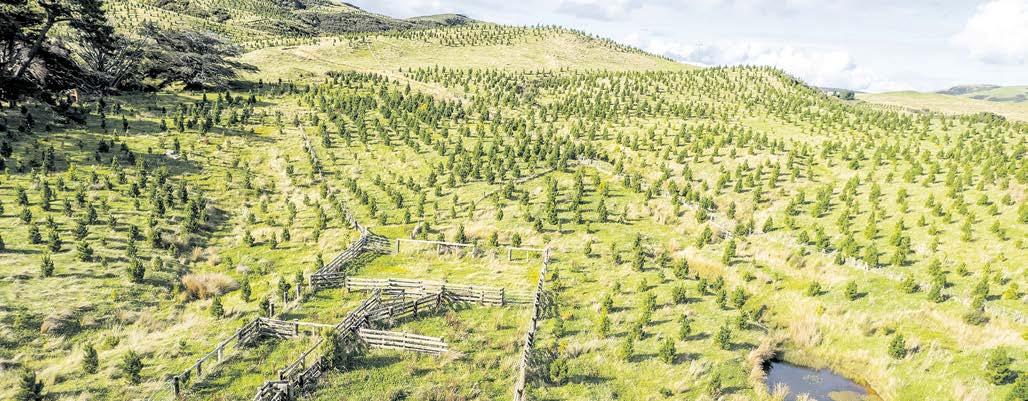
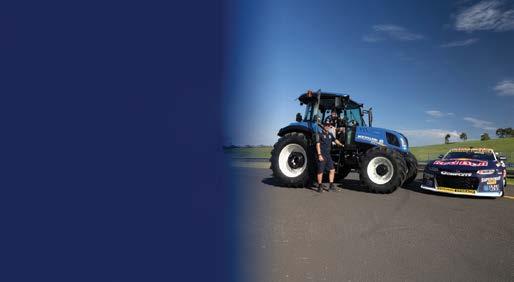



RURAL LAWYERS FOR RURAL CLIENTS
Areas of Practice
• Asset protection
• Commercial law including sale & purchase of businesses
• Commercial leases
• Company law
• Conveyancing Rural, residential & subdivisions
• Employment law
• Estate planning
• ETS & forestry
• Rural law
• Trust law
• Wills & estate administration
• Wind farming

• Quality, professional advice to farmers and businesses
• Expert taxation and business structure planning
• Family trust management
• Friendly, personalised service Contact us for a FREE NO OBLIGATION INTERVIEW to discuss your financial requirements www.baileyingham.co.nz
2050 – it’s a step too far
A Waikato University pest expert says New Zealand’s bid to be predator free in 25 years is – at present – out of reach – and more fenced sanctuaries should be created.
Carolyn (Kim) King, a university emeritus professor, has been studying stoats and their effect on New Zealand’s native species and biodiversity for the last 54 years.
Stoats were introduced, despite protests, in the 1880s in the hope of bringing the country’s rabbit population - introduced by European settlers for food and sport 50 years earlier - under control. The stoats found native wildlife much easier to catch and became invasive predators.
King, who immigrated from the United Kingdom in 1971, holds a PhD on weasels. It was thought her expertise could help with New Zealand’s stoat problem. Weasels and ferrets were also part of the doomed 1880s attack on rabbits but stoats were the most successful predator of the three.
They have few natural enemies other than rare encounters with ferrets or cats, so the only effective limit on their numbers is food shortage.
“Populations of animals are controlled either from the bottom up by food supply, or from the top down by natural enemies. And stoats belong to the first category,” she said.
King said New Zealand’s predator free hope is out of reach because of the lack of technology and resources to enable effective control of invasive predators like the stoat.
The plan was launched in 2016 by Prime
‘There are people who argue that we don’t want the whole country dotted with fenced sanctuaries. But in areas which are beyond human access like the high country, it isn’t possible to put enough pressure by conventional means on stoats and rats,’ - Kim King
Minister John Key – but the Crown owned company driving the programme is being disestablished as part of the 2025 budget. Its responsibilities will be shifted to the Department of Conservation.
King said trapping should continue because ‘the moment you stop trapping predators, they all come back”.
“...It’s still worth doing because you can make a difference to the survival rate of birds that are breeding in that area.”
In more remote areas, and for the severely endangered and most precious endemics, King said for the same amount of money as any feasible extension of Predator Free 2050, there could be an increased number of fenced sanctuaries like Maungatautari in Waipā.
“There are people who argue that we don’t want the whole country dotted with fenced sanctuaries. But in areas which are beyond human access like the high country, it isn’t possible to put enough pressure by conventional means on stoats and rats. What would help would be a series of fenced sanctuaries at the same cost as a massively extended
King’s latest book, summarising more than five decades of research, is titled Stoat in the Dock: Ecology and Management of Invasive Mustelids in New Zealand and documents the history and management of stoats in New Zealand.
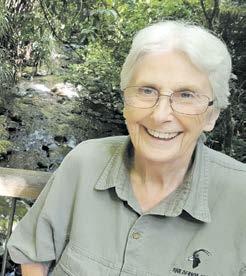






“We should take into account that even if predator control looks easy to do and the results look as if they should be worthwhile, it is not wise to proceed until after you have looked very carefully at the whole issue, because you’ve got to know the historical and biological background.
“Some attractive ideas risk repeating the 19th century misjudgement that brought stoats here in the first place. Who wants to be responsible for that?”
“The suggestion that stoats should be brought in to control a self-sustaining rabbit population was based on a very naive 19th century idea about the balance of nature. But New Zealand is a very different environment from that of United Kingdom, so people here are now facing a very different dilemma of trying to manage stoats,” she said.
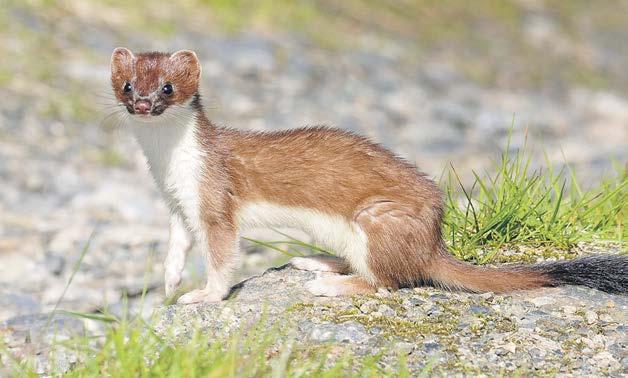

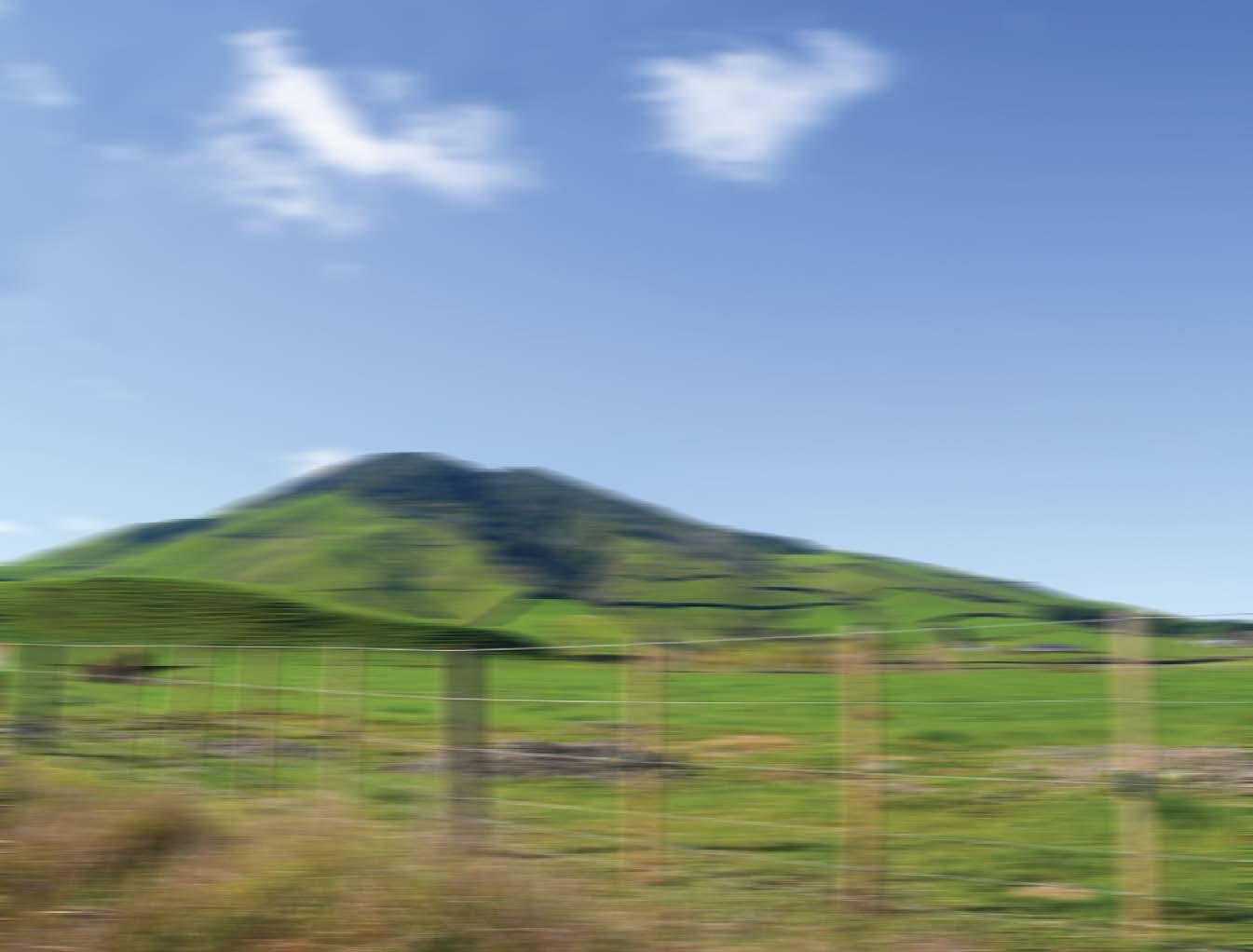
Wanted now – new members
By Jon Rawlinson
A King Country branch of the 100-yearold Rural Women New Zealand is calling on young blood to safeguard its future.
Centred around Piopio, the Waitanguru branch includes members from across the King Country.
From a high point of more than 15 members, it now has a “steady 10” and new recruits are tough to come by.
“If people want to join us, that’s great, and if they reach out because they need help, then we can offer support or find a way of helping them too,” branch chair, Maree Jones, said.
“We haven’t really worked out why younger women aren’t joining, although there are probably fewer farmers around these days, but we still have a lot to offer.”
“We have the core group of women that established it and most of us are still actively working on farms. Some who lived in our area have moved to Te Awamutu, but they come back to our meetings,” said Jones.
“We won’t be winding up – we’ll keep plodding along because our members are adamant they still want to meet.”
Born and raised in Morrinsville, Jones has been farming in the King Country for almost 20 years and runs a dairy farm near Mōkau. Both her mother and grandmother were involved with RWNZ.
The Waitanguru branch is one of RWNZ’s youngest, established in the early 2000s. The oganisation has deep roots and was The Women’s Farmers Union when founded in 1925.
The organisation continues to provide camaraderie, advocacy, training courses, workshops and invaluable advice from veteran farmers.
“They did a lot for women in those early years and it is just as relevant today,” said Jones. “Rural women can still feel quite isolated in some areas and there are aspects where women are still fighting for improvement.
“We held an event at the Piopio Cossie Club where we invited men as well as women. We had guest speakers – a lady speaking about being a parole officer and another about her Airbnb and how it worked as part of her farm. We hope to hold more of these local events going forward.”
Provincial and national support is valued at branch level.
“RWNZ doesn’t support us financially, but it helps by being our national governing body. Also, resources and grants are available for activities that they can allocate to branches, particularly for the centenary,” said Jones.
The government committed $250,000 to help the organisation expand its reach during its centennial year.
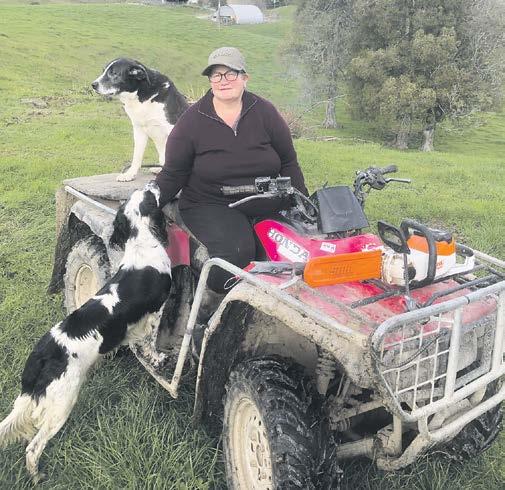
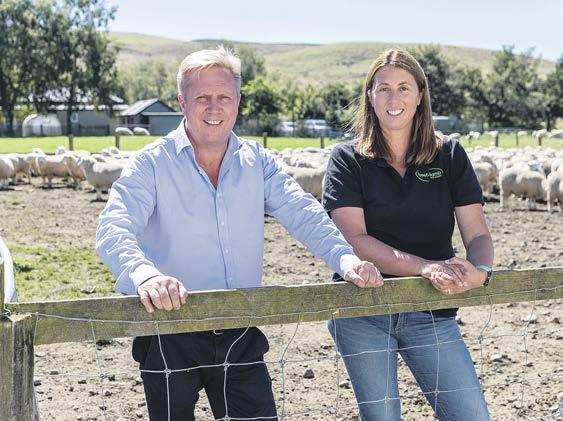


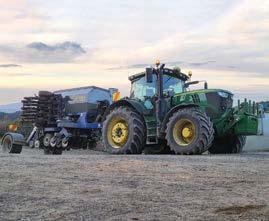


Axing the pine explosion
New legislation, based on land use classes, has been welcomed by Beef and Lamb, however Acland said the issue remains a distraction.
“Our sector wants to be able to get on and further grow exports, not spend time worrying about this issue.”
Introduced last month, the Climate Change Response (Emissions Trading Scheme – Forestry Conversions)
Amendment Bill is intended to protect the country’s most productive farmland.
It will put a stop to large-scale farmto-forestry conversions, McClay said.
Continued from page 1
“For too long, productive sheep and beef farms have been replaced by pine trees in the race for carbon credits,” he said. “That ends under this government.”
The legislation will still allow farmers to plant trees on up to 25 per cent of their land.
“It will protect farmers’ ability to diversify while stopping blanket Emissions Trading Scheme planting that’s been gutting rural communities in places like the East Coast, Wairarapa, the King Country and Southland.
“This policy is pro-farming, pro-food production, pro-commercial forestry and pro-rural New Zealand.”
The legislation is expected to come into force from October and restrictions would take effect retroactively from last December.
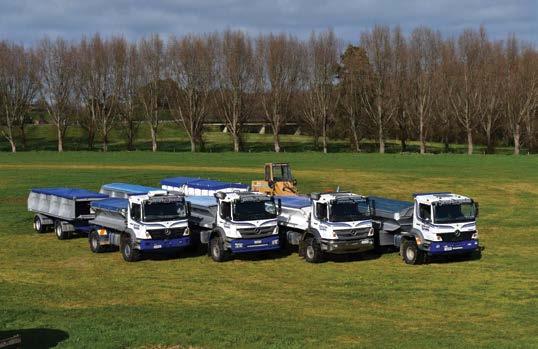
Meat market stays buoyant
By Jon Rawlinson
Sheep and beef farmers counting the costs of the summer drought are seeing a bullish meat market.
The drought prompted many King Country farmers to sell lambs early said Kevin ‘Morty’ Mortensen from PGG Wrightson Te Kūiti.
“A lot of lambs were killed or sold at the end of the summer and into early autumn just due to the fact that there was no feed, it was just too dry.
“We were fortunate that markets on the other side of the North Island and South Island could take them and some of the prices farmers received were higher than usual,” the regional livestock manager said.
According to Rabobank’s New Zealand agribusiness July report, beef and sheep meat prices remain strong.
As an indication, the beef price is about $2 a kilogram, higher than at the same time last year, while lamb is sitting at about $9.50.
A fertile spring could help farmers, however last summer’s drought may prescribe another bitter pill by reducing lambing percentages.
“Farmers are just getting into scanning their ewes, which probably weren’t in quite as good a condition because of the drought – I just hope that hasn’t affected it too much,” Mortensen said.
There may also be further pain

before improvement at the meat works. About 70 jobs have been cut at Te Kūiti Meat Processors due to a reduction in animals sent to slaughter.
Bull sales have been roaring ahead in the meantime. Prices have been higher than usual for calves and bulls at stock sales.
“They’ve exceeded expectations in a couple of ways, their values were right up there and the clearances and the numbers sold were very pleasing.”
Prices for beef calves are cause for cautious optimism, but there are no guarantees.
“It’s looking pretty positive for the next two to three years down the track and that’s reflecting in what people are paying.”
But he warned “we’re dealing with the meat industry and that can change”.
‘Careless’ companies fined
Waikato Regional Council has revealed the prosecution of three companies over effluent and environmental damage issues.
A Waikato farming company was $49,000 for the unlawful discharge of dairy effluent from an effluent storage pond in January 2024.
Apex Farming Limited was sentenced by District Court Judge Melinda Dickey in the Hamilton District Court.
Forestry management company Gray’s Forestry Services Limited and logging contractor Henry James Hale were convicted in the same court in March and this month respectively on a total of eight charges of breaches of the Resource Management Act.
The effluent case related to a compliance inspection in January 2024 at a farm at Wharepuhunga, near Te Awamutu. They found one of two dairy effluent storage ponds was overflowing and effluent ponding in the surrounding paddock was running off into a farm drain which is a tributary of the Mangawhara Stream.
Judge Dickey found the defendant was highly careless in the management of the farm effluent ponds and the system was vulnerable to human error or lack of oversight.
The charges in the other two cases related to breaches of resource management regulations associated with work on two sites in the Honikiwi district.
A six hectare woodlot in Okoko Road, Honikiwi, situated on a steep hillside above the Waitaheke Stream was harvested in the winter of 2023. The court heard there was a lack of appropriate erosion and sediment controls on the site, a failure to stabilise exposed soil and little effort made to prevent sediment and slash discharging into the Waitaheke Stream.
The second site was part of a 16ha woodlot on Kāwhia Road, Honikiwi, with a tributary of the Ngutunui Stream flowing through the forest. Harvesting and associated earthworks started in
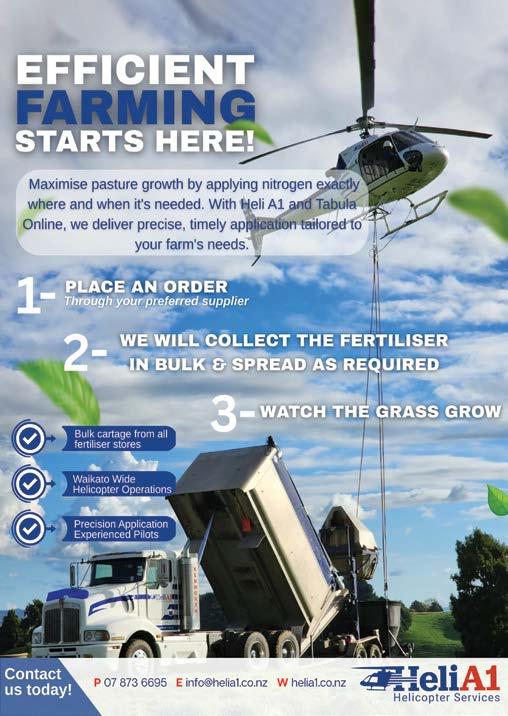
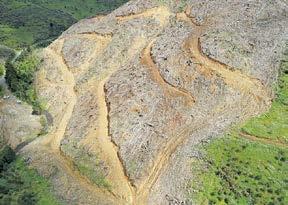
December 2023 and resulted in an illegal river crossing being installed, significant damage to the bed and riparian margins of the stream, and the discharge of sediment and harvesting slash into the stream.
Gray’s Forestry Services Limited was convicted on four charges and fined $87,500 for its role as the harvest manager. Hale, whose contracting company has since gone into liquidation, was also convicted on four charges and sentenced to 150 hours’ community work.
Judge Lauren Semple said the company was highly careless, bordering on negligent in its supervision of the site and that this lack of supervision enabled or permitted the environmental damage to occur.
She described Hale’s actions as highly careless bordering on reckless, when it became clear the planned harvesting method was unsuitable for the conditions.
Waikato Regional Council’s acting Regional Compliance Manager Evan Billington said damage to the stream in the Kāwhia Road harvest block was extensive and it was apparent little effort had been made to protect the waterbody or minimise the impact of harvesting on the tributary.
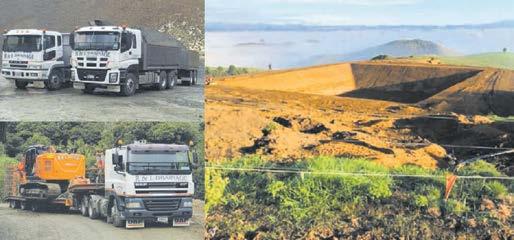






Strike 3: it’s a new generation
By Chris Gardner
Farmers are being urged to conduct a technology audit before telcos switch off New Zealand’s 3G network.
2degrees and One NZ will shut down their 3G, or third generation, mobile networks at the end of the year and Spark will follow next March. The 3G network was introduced to New Zealand with the iPhone in 2008.
“It’s a bit long in the tooth now,” New Zealand Telecommunications Forum chief executive Paul Brislen said. “We can put the spectrum to better use with 4G and 5G networks.”
While mobile phones and tablet computers such as iPads are the most obvious devices to

check for compatibility with more modern 4G and 5G networks, other farm management platforms and smart devices could also be impacted.
Some electric gates, farm security systems, irrigation controllers, smart meters, soil moisture probes, solar panels, vehicle trackers, and weather stations are among “smart” systems” which could be impacted. So are medic alert systems and pacemakers.
Most modern phones use the 3G network, but they are not reliant on it. The best way to ensure you can make calls after the switch off is to text 3G to 550 for a report back on your particular phone. An immediate response comes to identify the device which sent the text and whether it can connect to 4G.
“Most people will be fine,” Brislen said.
“Some people will have phones that can’t be upgraded, but for many in between they’ll need to make some changes to the settings or download some software to make it work.”
For some, a visit to their mobile provider’s store is in order.
He said providers have
been working over the past couple of years to upgrade their equipment and will have a plan - so customers were best advised to get in touch with them about what needs to be upgraded and what that looks like
“In terms of coverage the good news is that all the 3G towers are being upgraded to 4G and a bunch of new towers are being built to fill in the gaps,” Brislen said.
“Coverage should be as good if not better,
because 4G can carry more customers per cell site than an equivalent 3G tower, so you won’t find there’s as much congestion on the smaller towers.
“One NZ is also turning off its 2G network, and by the end of the decade Chorus will have shut down the last few remaining copper lines. If you’re using any of these technologies now is the time to work out what you need to do for the future.”
Second time lucky for Hugh
By Chris Gardner
Te Akau sheep and beef farmer Hugh Jackson won the Young Farmer of the Year with a little help from Pirongia dairy farmers Chris and Emma Poole.
Jackson, 27, who works on an 1800ha family farm alongside his father John and mother Jenny, took the national title of New Zealand’s top young farmer in Invercargill at his second grand final.
“I’m still smiling about it, it was a real buzz, and will stick around for a while,” said the fourth-generation farmer. His family has owned the farm since 1947 when it was purchased by his great grandfather John Hool.
Jackson worked alongside 2023 winner Emma Poole, 30, whom he competed against, and her husband Chris, 30, to organise the 2024 competition in Hamilton and asked for their help as he prepared for the 2025 event.
It is the 57th time the title has been awarded.


Jackson was put through his paces at the grand final, with tasks such as shearing sheep, building bridges, filleting fish, and making haybales, to show off his diverse practical farming skills.
Aorangi region finalist Gareth McKerchar was 68 points behind in second place, and Tasman’s George Letham was third.
“Chris and Emma helped me a bit, in the lead up to it,” Jackson said. “They were great people to go and see and help with the practical side.”
Chris Poole said Jackson “absolutely deserves this win.”
Jackson, chair of Hamilton City Young Farmers Club has an interest in technology and a passion for mental health.
He hopes winning will support him in showcasing agriculture in the Waikato and across the rest of New Zealand. He believes technology has a massive part to play in the future, as well as the young people who will ultimately be using it.
“With this title, I really hope to help showcase the talent we have coming through and highlight the opportunities that are there for young people,” he said.
“Where the industry is moving in terms of technology is exciting, and there is an opportunity where we can really grow people and provide career opportunities within that.”
Jackson also claimed first place in the Community Footprint module, the AgriBusiness challenge and the AgriSports section.
New Zealand Young Farmers chief executive Cheyne Gillooly said Jackson impressed with his innovative thinking and shining talent across the agricultural sector.
“It’s inspiring to see the recognition go to someone who will not only be a strong ambassador for the next generation of young farmers, but across the agricultural industry.”
“After seeing the talent, the future is bright and forward-thinking for New Zealand’s food and fibre sector.”


The Blended Bunch – Succession Planning for Stepfamilies
Every family is different, and blended families are no exception. The classic scenario is two people in a relationship who each have children from previous relationships. It is common for each parent to want to make sure their own children are looked after and receive the assets their own parent contributed to the relationship. However, while you may have your plans for what happens when you pass on, the law often has a different idea.
For starters, you are required to make “adequate provision” in your Will for your spouse. You also have a moral duty to look after your kids. These obligations can be tricky to balance. There may be further complications. Your spouse’s child might perform some kind of service for you, such as assisting on the farm when you can’t work it the way you used to. This scenario could give rise to a claim that the child did this expecting to be rewarded in your Will - a successful claim could come at the expense of your natural children. Furthermore, if your relationship ends you could expect to part with some of your wealth. The key to avoiding a worst-case scenario is preparation ahead of time. Ensure your Will is current. Consider establishing a family trust, preferably well ahead of starting a new relationship. You may also consider contracting out of relationship property laws. Always get proper legal advice to ensure your future unfolds the way you envisage it.

Jamie Graham

Honey of a season
By Chris Gardner
Lindy Bennett’s bees made honey while the sun shone through the drought.
“Warm, sunny days with little wind are perfect for bees,” Bennett said.
“They can forage longer, collect more nectar and pollen, and keep the hive humming.”
Her bees, whose honey is sold under the Mountain View Honey label, produced 1000kg of honey last season, helping her pay for the honey packing shed she made from an old shipping container and installed on the dairy farm near Pirongia early in the season.
She hopes to double honey production next season.
This winter the couple have planted their dairy farm in manuka and kanuka trees to give her honeybees plenty to forage. They planted 2000 trees in June,
after planting 4500 trees last year.
“We used to farm at Kakepuku, and the bees used to forage well,” Lindy said. “We are trying to give them something to forage in the winter.”
As well as keeping bees in eight hives on her farm, she keeps 12 hives near Mt Pirongia, 10 in Waitomo, eight near Mt Kakepuku, 10 near Mt Ruapehu and two near Mt Maunganui.
Each hive homes between 40,000 and 60,000 bees, including its own queen, sourced from the Waikato bee keeping community.
The going rate for a queen bee is between $50 and $60.
While Bennett hopes next season will be profitable, it’s still a labour of love.
“It is still at the hobby stage,” she said.
Before she can sell her honey the Ministry for Primary Industries insists,
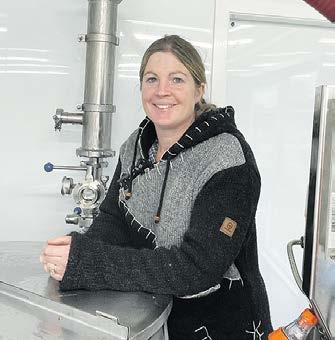
she must test it for plant toxin tutin which is found in tutu plants.
“I have been testing every year,” she said. “I have never had any problems.
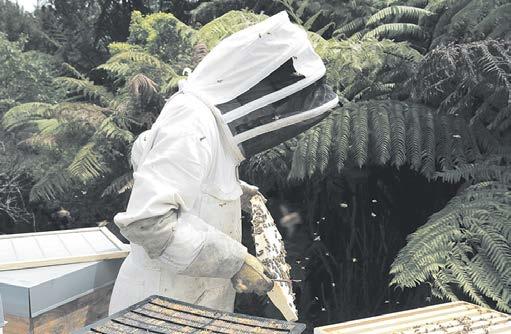

FARM SERVICES



Bennett started bee keeping at Kakepuku.
“I have always been interested in bees,” she said. “I’d just bought a book on beekeeping, purchased brand new hiveware, and finished painting the undercoat — when, out of the blue, our first swarm arrived. We skipped straight to chapter seven on swarm catching and dived right in from there.
“We got up to about 12 hives at Kakepuku.”
She believes bee keeping is a good thing for her as well as the family – she has two young daughters.
Even if she doubles her hives to 100 this summer, Bennett says she is far from making the endeavour a full-time job.
“Four hundred hives is a full-time job for one person,” she said.





Uni team takes their pick
A Waikato University team is developing cost-effective technology to reduce fruit wastage.
Te Kura Mata-Ao School of Engineering senior lecturer Ajit Pal Singh and his team of seven have been working on a new gripper, the part at the end of a robotic system that physically picks the fruit, much like a human hand.
“One of the innovations is the actual gripper structure. The other is a soft ‘finger’ that attaches to the structure and gently interacts with the fruit, so it doesn’t get damaged,” said Singh.
“If the fruit is bruised or dropped, the benefit of robotic automation is lost. Our designs aim to reduce damage through their soft, flexible contact surfaces.”
The team believes the system could assist growers facing labour shortage - “a lot of fruit goes into the waste because it’s
unpicked - so they’re losing money”.
The team’s long-term goal is to develop robotic tools that reduce dependence on seasonal labour.
Preliminary field trials with the grippers had produced promising results - effective fruit handling and minimal visible damage.
“These grippers are 3D-printed prototypes, single, jointless structures designed specifically for orchard use, not just lab testing.” Singh said.
“We wanted something that performs in real conditions: easy to maintain, robust, and ready for the demands of the field.”
“From an engineering point of view, our focus is on solving practical, real-world challenges.
“This project is a strong example of how innovative design can potentially deliver high-impact solutions tailored to industry needs.”
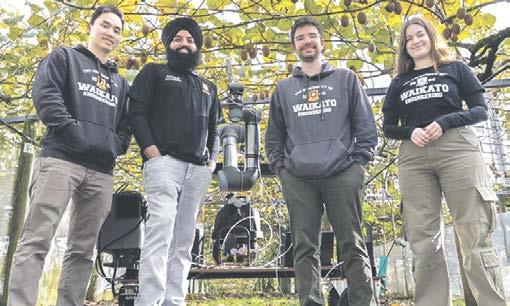

Green rules ‘flawed’
Federated Farmers wants proposed ‘green’ finance rules scrapped, warning they are ideologically driven, unworkable, and risk harming rural communities.
In a letter to Ministers and key officials, the organisation outlined a series of concerns with the Sustainable Finance Taxonomy. Federated Farmers banking spokesperson Mark Hooper said the framework was fundamentally flawed.
“It has been created without meaningful input from working farmers, it imposes unrealistic standards, and it risks cutting off financial services to legitimate, productive rural businesses,” he said.
The Sustainable Finance Taxonomy is being developed by the Centre for Sustainable Finance and the Ministry for the Environment to provide a consistent framework for defining what is ‘green’ or ‘sustainable’ in financial markets.
“One of our core concerns is the lack of practical farming expertise involved in developing the taxonomy,” Hooper said.
“There are no hands-on farmers involved with the Technical Advisory Group. Instead, it’s full of shiny-shoed bankers, sustainability advisors, and forestry lobbyists.
He said the proposed taxonomy defines ‘green’ farming as producing less than one tonne of CO₂ equivalent per hectare per year.
“This threshold is so low that no working New Zealand farm could realistically qualify, even though we’re home to the most emissionsefficient food producers in the world.”
He said a rule which would require 80 per cent of fertiliser use to come from low-emission products within three years wasn’t feasible.
“Those alternatives are not yet economically viable or widely available in New Zealand. Farmers can’t use what doesn’t exist.”






















Every month we have 3 prize draws. Every 3 head qualifies for 1 entry into the draw. Winners receive $300 worth of MTA fuel vouchers (conditions apply)
CONGRATULATIONS MAY 2025 WINNERS
• Caroua Farms Ltd - Foxton
• Carpe Diem Dairies Ltd - Woodville
• P Vanderpoel & A Miller - Te Kūiti
CONGRATULATIONS JUNE 2025 WINNERS
• I McGregor & C Mercer - Te Kūiti
• Riverlee Downs Ltd - Kimbolton
• SB & VA Kjestrup - Piopio


Introducing new Buyer Warren Charleston
Universal Beef Packers Ltd buyers are
● Peter Knowles, Stock Co-ordinator, Te Kūiti - 07 878 5160 or 021 798 097
● Warren Charleston, Buyer, Ōtorohanga/Waipa - 027 496 3007
● Kevin Donovan, Buyer, Te Awamutu - 07 871 9366 or 0272 467 457
● Nigel McClure, Buyer, Waikato - 021 860 101



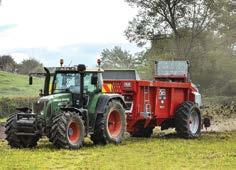
GRASS / MAIZE HARVESTING


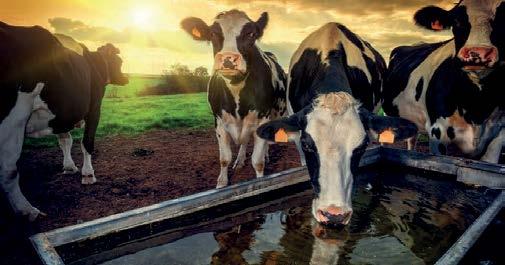
•
•
CULTIVATION / PLANTING
sprayer


